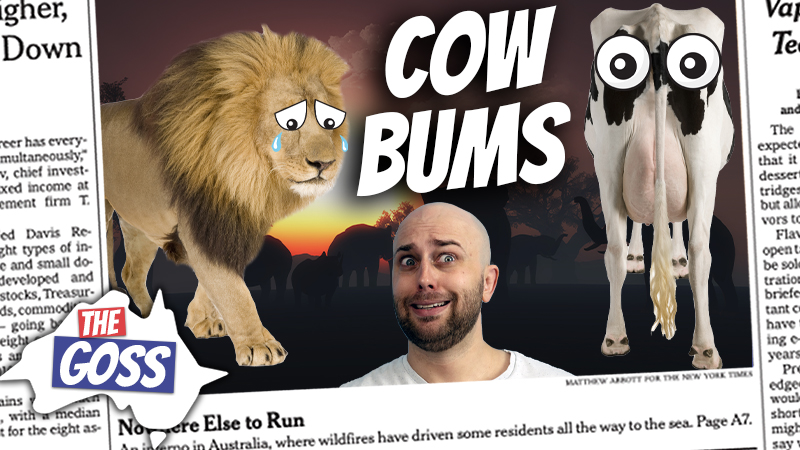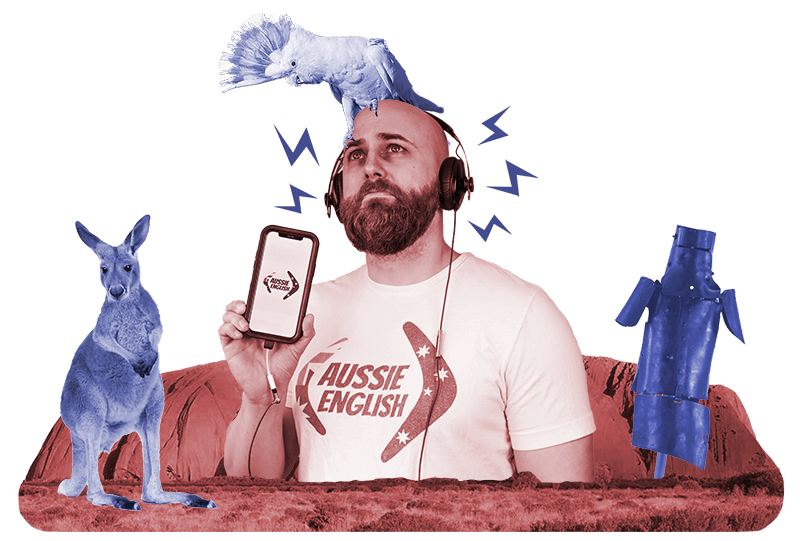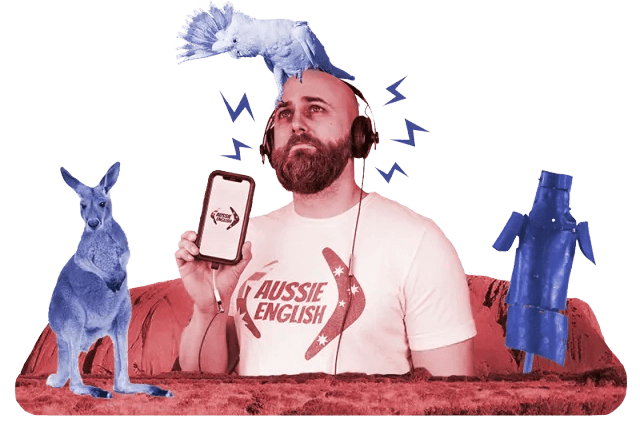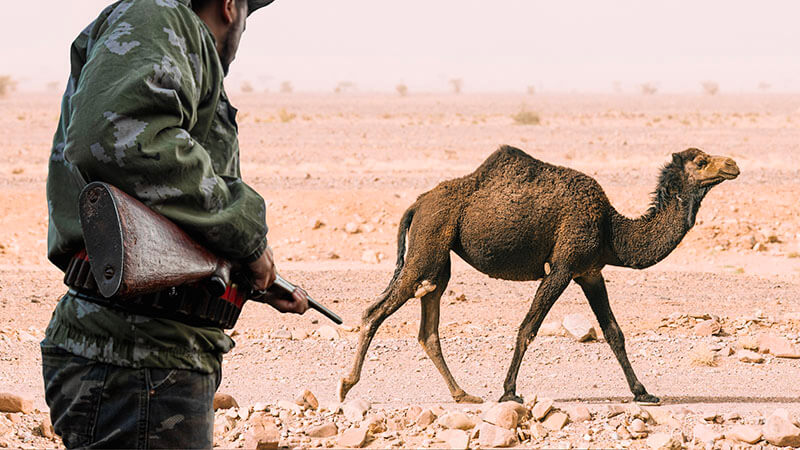
AE 948 - THE GOSS:
Drawing Eyes on Cow Bums Prevents Lion Attacks in Botswana
Learn Australian English by listening to this episode of The Goss!
These are conversations with my old man Ian Smissen for you to learn more about Australian culture, news, and current affairs.

In today's episode...
We get to talk about cattle farmers in Botswana who have been drawing ‘eyes’ on the bums of their cows to prevent lion attacks – and it’s working!
In a project they aptly named the “I-Cow Project”, they have come up with this idea to prevent large predators from attacking their cattle.
Improve your listening skills today – listen, play, & pause this episode – and start speaking like a native English speaker!

Watch & listen to the convo!
Listen to today's episode!
This is the FREE podcast player. You can fast-forward and rewind easily as well as slow down or speed up the audio to suit your level.
If you’d like to use the Premium Podcast Player as well as get the downloadable transcripts, audio files, and videos for episodes, you can get instant access by joining the Premium Podcast membership here.
Listen to today's episode!
Use the Premium Podcast Player below to listen and read at the same time.
You can fast-forward and rewind easily as well as slow down or speed up the audio to suit your level.
Transcript of AE 948 - The Goss: Drawing Eyes on Cow Bums Prevents Lion Attacks in Botswana
G'day, you mob. Pete here, and this is another episode of Aussie English, the number one place for anyone and everyone wanting to learn Australian English. So, today I have a Goss' episode for you where I sit down with my old man, my father, Ian Smissen, and we talk about the week's news, whether locally down under here in Australia or non-locally overseas in other parts of the world.
Okay, and we sometimes also talk about whatever comes to mind. Right. If we can think of something interesting to share with you guys related to us or Australia, we also talk about that in The Goss'. So, these episodes are specifically designed to try and give you content about many different topics where we're obviously speaking in English and there are multiple people having a natural and spontaneous conversation in English.
So, it is particularly good to improve your listening skills. In order to complement that, though, I really recommend that you join the podcast membership or the Academy membership at AussieEnglish.com.au, where you will get access to the full transcripts of these episodes, the PDFs, the downloads, and you can also use the online PDF reader to read and listen at the same time.
Okay, so if you really, really want to improve your listening skills fast, get the transcript, listen and read at the same time, keep practising and that is the quickest way to level up your English. Anyway, I've been rabbiting on a bit. I've been talking a bit. Let's just get into this episode, guys. Smack the bird and let's get into it.
Eyes painted on cows' butts for lion attacks. The end. Nothing more needs to be seen.
Yeah, I thought you'd like that one.
That's a winner.
That is not an Australian one.
No.
Although it would be pretty interesting if lions lived in the outback here. Right? That would be pretty crazy.
Well, maybe there'd be a few less camels and goats.
Well, not if you painted eyes on their bums, apparently.
Well, yeah, I don't think lions would be too concerned about eyes on camels' butts, they're a bit too high up.
Well, that would be like a giraffes face, right.
Yeah, exactly.
So, you want to read this one out?
Oh, no. You can go for it. Go for it. This one's yours, I just had to read the title.
Yeah. This is an article from Big Think. So, an experiment in Botswana suggests a non-lethal deterrent for predatory lions. As opposed to non-predatory lions?
Yeah, again...
Lions that don't predate.
Yes, there is a...
Vegetarian lions.
There is an element of gilding the lily here with the language. But yeah.
So, I'll read out a little bit of this, but it was pretty cool. For cattle owning subsistence farmers in Botswana, lions pose a threat to the livestock on which they depend. Attempts to keep cattle safe often result in the shooting or poisoning of the big cats.
Aside from the obvious moral discussion of what makes the life of one animal more worthy of preservation than the other, large predators play a vital role in preventing a trophic cascades in which the loss of one species throws an entire ecosystem dangerously out of balance.
We talked about that in another episode.
We have. We have. So yeah, you take out the large predator at the top, the things that it protects upon can sometimes go crazy, you know, like if you were to kill all the wolves in Yosemite National Park or Yellowstone National Park and all the deer suddenly breed up and start destroying the environment, that's a trophic cascade where it ends up screwing up all of the ecosystem and the animals below it.
...Eat all of the plants...
And then the animals below them have trouble surviving. Yeah, exactly. So, the African lion population is in decline with the estimated number of adults ranging from 23,000 to 39,000, as opposed to more than 100,000 in the 90s, which is crazy. I didn't realise that they'd almost dropped three thir- Three thirds? Three quarters.
Yeah.
That's...
About- Between a quarter and 23% to 39%.
Yeah. So, as part of the search for a non-lethal remedy to the farmer's problem, a collaboration between the Botswana Predator Conservation Trust in Africa and the Centre for Ecosystem Science at the University of New South Wales and Taronga Conservation Society, both in Australia, recently completed a programme they called the i-cow Project.
Except its the letter I, -cow.
Like iPhone.
Yeah.
It's tongue in cheek, pun intended, moniker might just as easily be spelled eye-cow, as in your eye that you can see with, e-y-e, since what it involves- What it involved was painting large eyes on the hindquarters of cows to see if lions would be deterred from attacking them, and it worked. So yeah, it was interesting, apparently the experiment involved- What have we got here?
So, 683 cows had eyes painted on their bums and these are like black and white eyes, literally painted one on each cheek.
I'm just laughing. This is the stand-up comedian in me. I can just see the sort of- That herd of cattle sitting in a pen somewhere going, did you draw the black card or the red card? I drew the black card. What's happening to you? Oh, they're painting eyes on my butt. Well, they're not painting eyes on my butt, what's going to happen to you? Oh, I'm supposed to be protected from lions. What about me?
What, have I got eyes on the back of my head?
The control group is sitting there going, wait a minute.
Yeah, this is dodge. So, 683 cows had eyes painted on their rumps, a cross was painted on the posteriors of 543 cows to learn if a natural eye shape was required to deter predators and 835 cows were left unpainted. So, I guess they've done the eyes to test...
...There was a black, red and a blue card.
Yeah, they've done crosses to make sure it's not just that you've painted a circle on the bum of the cow, and then they're the ones that have just been left alone. So, most lion attacks occur during the day. Cattle are more likely to be securely penned at night. So, the test cattle were painted in the morning and released to forage as usual, there were 49 painting sessions with each lasting 24 days.
So, here we go, while 15 of the unpainted cows were ultimately taken by lions. So, that's 15 out of 835. Not a single eye painted cow was killed and unexpectedly a painted cross seemed to help a bit as well, with only 4 cross painted cattle being attacked. So, I thought that was pretty cool. So, I think the basic idea here is that lions won't attack something when they think it can- It's looking at them.
Particularly animals that have horns on their head.
Yeah, exactly.
They don't want to attack at the pointy end.
Well, and you see this all the time. Right. In these, like, documentaries where you've got a lot of buffalo or something and they're trying to chase- They're trying to grab one of them. Usually, they're waiting for the animal to turn and run, so that they can grab the bum. And as soon as the animal turns around, if it's getting chased, usually the lion will stop and kind of wait to see when are you going to turn and run again.
Exactly.
And I think the guy was saying, the guy from UNSW, Neil Jordan, I think he was saying that he'd seen something where an antelope was being chased by a lion and effectively it turned around and the lion stopped and just gave up as soon as it knew the antelope was like onto it.
If you're going to defend yourself, it's a different proposition.
Yeah.
Because for one side of that equation, it's life or death. But for the Predator, it's, eh, I'm just going to go after a dumber one. I'm not going to take you on.
Well, and its...
The give up cost- Yeah. The give up cost for a predator is fairly low.
Yeah.
Whereas the don't give up cost for a prey animal is 100%. If you get attacked by a lion you're going to die, you know, you're not likely to survive. But if so, if you can stop them attacking, yeah, it's an interesting little experiment. So, not only are they putting eyes on them, but if you're putting two big eyes on a cows butt it must look like a pretty bloody big animal with this giant head.
Two heads, right? Yeah. Yeah. But it was interesting today we're talking about two- What have we got here? There's also support for this deterrent effect in nature. We're having markings that look like eyes staring back at a predator appears to provide a distinct evolutionary survival advantage for a range of species, including butterflies, moths, reptiles, fish and birds.
So, this is why, especially with things like butterflies, and I've definitely seen caterpillars that look like snake heads, their bums look like snake heads, I think. You know, it's really crazy...
A lot of caterpillars just have bums that just look like heads as well, you know, two headed animals.
It blows my mind how much evolution has impacted the, you know, adaptation of these animals. So, it's like the predators are effectively, constantly picking off individuals of a species. And then as a result, the individuals that don't get picked off, you know, have these mutations where they may have different pigments or colours or limbs or whatever it is...
They can run faster or yeah, whatever it happens to be.
Well, and in the case of eyes that these moths slowly develop these markings on their wings, they're the only ones that the predators don't attack. And the more and more that they look like eyes, the more they're left alone.
Exactly.
And beyond that, the cool thing is like mimicry, right. Where animals- One animal will evolve to be very deterrent. It may have markings like the eyes, or it may be toxic or venomous or something. And then you'll have another species that looks similar, and predators will start avoiding the individuals of that species...
But all it has is a flag, it doesn't actually have the deterrent.
Yeah, well, that's- It's got the holster, but not the gun, right. So, it looks like it's carrying, but it's actually got no bullets.
Yeah. So, evolution's cool. I definitely love these sorts of things. So, what do you reckon is going to happen with these cows? You reckon they're going to have this widespread, I don't know, new job of painting eyes on the bums of cows in Botswana?
Well, maybe they will be. The question is going to be, is to how quickly the lions learn.
Yeah. Well, that was one of the caveats, I think, in this article. Right.
Because then there's going to be- It's probably going to take less than one generation of lions to have a few smart ones go, no, that's a fake. They'll pick the fake.
It would be interesting to see if that was passed on culturally, like...
I'm sure it will be.
...The Lions would just say, go for the ones with the eyes on the bum.
Yeah, well, you know, because their- And their cultural evolution is obviously in a single generation, it can change the entire behaviour of a population in a single generation. It doesn't rely on, you know, individual genes getting, you know, increasing in numbers over, you know, potentially hundreds or thousands of generations.
So, it can happen instantaneously because all you need is, you know, a couple of smart females, particularly, who just teach their cubs.
Well, they don't even have to be smart, right. They just for whatever reason, they just ignore the eyes and start attacking these cows and then as a result, you know, they're constantly attacking these cows with eyes on their bums. It turns out they're easier prey than the wild animals and then they're like, well, just go for the ones with eyes on their bums. They're a sure thing.
You'll fatten up, although you'll probably piss off quite a few Botswana farmers and they may poison or shoot you.
...High velocity lead poisoning, to the next problem, but...
What do you think's going to happen with lions in the future? Do you think we're going to lose those in Africa?
I think there are now, and this is again, with no expertise in African wildlife management, but I think there are now enough large parks where populations of large predators are going to be potentially far enough away from the boundaries of these parks, because it's the boundary animals that are the problem, it's the ones that are actually going to be out hunting domestic livestock rather than, you know, out hunting wild wildebeest and antelope.
And so, I think there are now enough large parks where some will survive, but clearly that needs to be managed and there will be far fewer of them. Because, you know, lions will be perfectly happy, I'm sure, over a generation to pick themselves up and move themselves a few hundred kilometres if there's a lot more food hanging around, you know, you've got to try pretty bloody hard to go out and catch an antelope. But...
Yeah.
If you've got, you know, a paddock with a few hundred cattle sitting in it, then it's just smorgasbord for lions...
Yeah. I hope they end up, you know, not being wiped out because they're definitely something I'd like to see in the flesh.
Well, it's the last one on my bucket list is South Africa or southern Africa and east Africa...
...To go on safari.
...To go on the safaris.
Did you ever hear of the Tsavo man-eaters?
Yeah.
How crazy is that story? Can we go through that a little bit? So, the...
...You go. Yeah.
Tsavo man-eaters were a pair of man-eating male lions in the Tsavo. This is spelt T-S-A-V-O region, which were responsible for the deaths of a number of construction workers on the Kenya Uganda railway between March and December 1898. And the significance of this lion pair was their unusual behaviour of killing men and the manner of their attacks.
So, I think this was sort of like going on from what you say, these lions learnt very quickly that these men were working on a railway, they were laying sleepers and creating this railway in Uganda and Kenya, going between the two, I guess. And they- The lions would just pick off, you know, people relatively frequently once a week or two, right.
People are fairly, you know, indefensible. They don't have a lot of defence.
So, yeah. What does it got here? In 2001, a review about causes of man-eating behaviour among lions revealed that the proposed human toll of a hundred or more was most likely an exaggeration. But the actual death toll was probably 28 to 31 victims from these two lions. And so, they ended up getting shot and killed, and now they're in the Field Museum in Chicago. You can go and see these animals...
Been there, but not when the lions were there.
I can't imagine how terrifying that would have been. To be like, I'm not working at night or I'm not working with these things nearby. Jesus.
Fortunately, there- It's- There's a bit of luck there in a sense that these were, and they would have been brothers, the two lions. But the fact that they were males is fortunate because if they had been a couple of females, they would have been teaching their cubs.
Yeah.
Hey, these two-legged animals are much easier.
Well, and it is- This is that sort of issue we have with a lot of predators around the world. Right. Once they learn of a certain food source being readily available, they tend to continue to exploit it, whether it's a crocodile, a bear, or, you know. They have that massive issue in North America with bears, not necessarily killing humans, but just getting into trash and coming into suburbs and stuff.
Yeah, we, you know, humans provide all sorts of food from them, either directly or indirectly.
Did I send you that video of the crocodile...?
Yeah.
...Coming up on the beach in northern Australia.
Yeah. Eating sharks.
Yeah, good God.
Yeah. With all due respect to my friends who are fishermen, there's a lot to answer for, you know, this story was, without stealing your thunder, was...
No, go for it.
...Was basically, you know, fishermen capturing or catching sharks, and clearly...
These were small sharks.
...Small sharks, but clearly slaughtering them, filleting them and just tossing the carcases on the beach and these crocodiles just, you know, coming up on the beach and going...
Okay.
...Okay, you're just providing food for me, so that beach is now going to be unsafe for a long time.
Well, and that's the thing people don't think about, especially with these predators. It takes one idiot to encourage them to try to continue to manipulate easy food effectively. Right. And then endangering other people. Because what happens if you have a small child or a dog or something or you get too close...
Crocodiles are long lived, they're intelligent, they form long term habits and they're patient. So, crocodile's not going to come up on the beach the next day and go, oh, no, no sharks on the beach, so I'll never come back here again. they'll do it every week for years.
Well, I had this story from someone, when I was doing turtle research up in Queensland, I remember someone telling me that when they were doing turtle research on one of these islands, they had to carry a rifle because of the crocodiles that would go around the water. And he was saying, oh, yeah, whatever, you know, yeah, there's crocs here. I know there's crocs here. But what really, like they're not going to be that bad.
And he was telling me that the first night that he walked around the island, he was like, I could see a crocodile just slowly swimming about 20 metres out in the ocean, just following us the whole time.
And now the crocodile knows that it takes 20 minutes to walk around the island...
Yeah. And then he was like, the next night I had the gun. He was like, I couldn't believe it. I'm like, Jesus Christ. That would be- Yeah. That would be a very bad way to go. But it was funny because I shared this with my group in the academy. I was like, check this out. This is what happens if you're an idiot with fishing in, you know, far north Queensland or northern Australia.
Make sure, you know, if you're on the beach, especially like this, where you're at the water's edge and you're fishing, pull the fish in and get away from the water's edge as soon as you get the fish, like get- Get the F away from the water's edge. Because if you fuck around, if you leave bait, you're going to attract things like crocs, which are just, that's why they're called saltwater crocodiles.
And it was funny, even these guys, I was chatting to them, and they were like, wait what? There's crocodiles in Australia? I was like, dude, like, this is why as soon as you get past about Bundaberg in Queensland, you just stay away from the water's edge. You just stay away from- Don't get in the water, just stay away from the water. And it goes all the way around the northern coast and down Western Australia. Yeah.
Yes. So, predators.
I know they're pretty cool. I wish, though, I do wish we still had the marsupial lion in Australia.
Thylacoleo.
Thylacoleo. I would love to have seen that thing in the wild, not because I would love to- I mean, you know, it's a predator, so it would have been badass to see that.
Yeah.
But like with the thylacine, the Tasmanian tiger or Tasmanian wolf, for me as an evolutionary biologist the thing that really would have blown my mind is seeing the thylacoleo in the flesh at a zoo next to an exhibit of actual lions. Because they convergently evolved effectively the same body type, but one's a marsupial with pouches and the other ones a eutherian mammal that gives birth to live animals...
Well...
...More developed young.
...Thylacine, even though it was called the Tasmanian tiger, it was really a Tasmanian wolf.
Yeah.
It looks...
It had the stripes, so it got a tiger name.
...Looked like a wolf for everything else.
Well, at least we have video of that, right?
Yeah.
So, that's what blows my mind. But Thylacoleo was here with indigenous people, and so, you know, indigenous people in Australia would have been up against effectively lions, not to mention a lot of these other huge megafauna in Australia, like megalania, the huge 6-metre-long goanna that would have been eating humans, like- Insane stuff. But yeah, Thylacoleo would have been cool because it had these huge thumb claws, unlike Velociraptors.
And I think, too, they had just one large molar tooth on the top and the bottom of their jaws, which were like scissors...
Yes.
...For just shearing flesh off.
Which, funnily enough, is what big cats have- Well, all cats have.
Well, they have got multiple teeth, though...
Yeah, they do but, yeah, they're actually...
...Weird one single tooth that's just really, really big.
So, that's the convergent evolution thing, that's...
For shearing...
...It's a different version of the same solution.
Yeah.
Yeah.
Well, and that's the same with the claws thing, right. It didn't get- I think cats don't tend to have thumbs...
No.
...Right. Well, they have like a small finger, like a- What would you call it? Like a residual- Dew claw, but the real grabbing tools are the main claws, the four fingers.
But they're not- They're not opposable. They don't- They can't do this.
Yeah.
They can do that.
Yeah. So, it just would have been so cool to have seen some of the megafauna that theoretically should still be here, right. Like, the environment hasn't changed, that-
It has changed to some degree in that we have, you know, different species in different areas, but, you know, 35,000 years ago, Australia wouldn't have looked that much different from what it does currently, and yet it would have had massive wombats, all sorts of huge kangaroos, large birds and these lions effectively roaming the place. It just would have been phenomenal to see that.
It certainly would.
Anyway, I've been ranting a lot.
You have, but that's all right.
Yeah. Thanks for joining us.
If in doubt, just remember. Wait a minute. Wait a minute.
What?
Eyes painted on cow butts fought lion attacks. So, if you're a cow out in the wilds of Africa hire someone to paint eyes on your backside.
Well, when you go on safari, maybe something to invest in would be a backpack with eyes on it.
Backpack with eyes on it.
Or just some chapless pants...
It's a big thing now...
With your butt cheeks hanging out and draw some...
I know.
...Get some tattoos of eyes on your bum.
Yeah, exactly.
That'd be nice.
Safari butt.
All right. See you guys.
Bye.
Alrighty, you mob. Thank you so much for listening to or watching this episode of The Goss'. If you would like to watch the video, if you're currently listening to it and not watching it, you can do so on the Aussie English Channel on YouTube. You'll be able to subscribe to that, just search "Aussie English" on YouTube.
And if you're watching this and not listening to it, you can check this episode out also on the Aussie English podcast, which you can find via my free Aussie English podcast application on both Android and iPhone. You can download that for free or you can find it via any other good podcast app that you've got on your phone. Spotify, podcast from iTunes, Stitcher, whatever it is.
I'm your host, Pete. Thank you so much for joining me. I hope you have a ripper of a day, and I will see you next time. Peace.

Listen & Read with the Premium Podcast Player
Get more out of every episode!

Premium Podcast members get access to...
- All 900+ podcast episodes including member-only episodes
- Member-only episode video lessons
- Downloadable transcript PDFs & audio files for every episode

Recent Episodes:


AE 1299 – Pete’s 2c: Do You Ring, Call, or Dial Someone on the Phone in Australia?

AE 1298 – Learn English with a Short Story: Day at the Beach

AE 1297 – The Goss: How ‘Dropping In’ Culture Has Changed in Australia

AE 1296 – The Goss: Gorilla Glasses & Dad’s Crazy Zoo Stories – MEMBERS ONLY

AE 1295 – The Goss: Australia’s Most & Least Ethical Jobs

AE 1294 – The Goss: Australia Just Had the Best Aurora in 500 Years!

AE 1293 – The Goss: Should Aussie Schools Ban Homework?

AE 1292 – How Aussie Do Asian Australians Feel? r_AskAnAustralian

Share

Join my 5-Day FREE English Course!
Complete this 5-day course and learn how to study effectively with podcasts in order to level up your English quickly whilst having fun!

Join my 5-Day FREE English Course!
Complete this 5-day course and learn how to study effectively with podcasts in order to level up your English quickly whilst having fun!


Want to improve a specific area of your English quickly and enjoyably?
Check out my series of Aussie English Courses.
English pronunciation, use of phrasal verbs, spoken English, and listening skills!

Have you got the Aussie English app?
Listen to all your favourite episodes of the Aussie English Podcast on the official AE app.
Download it for FREE below!



Want to improve a specific area of your English quickly and enjoyably?
Check out my series of Aussie English Courses.
English pronunciation, use of phrasal verbs, spoken English, and listening skills!
Leave a comment below & practice your English!






Responses